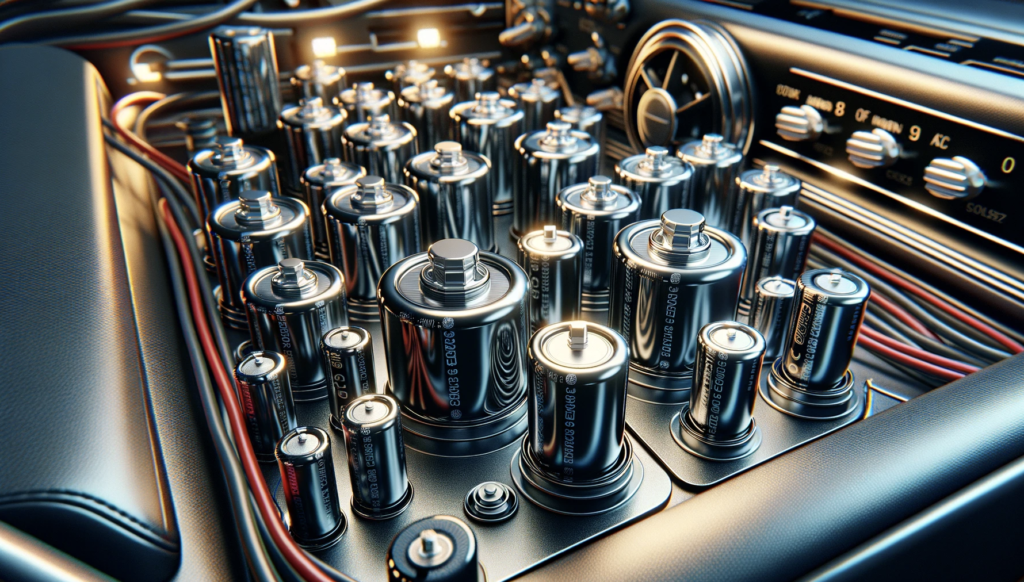
Optimizing Car Audio Systems for Crisp Sound Quality: A Comprehensive Guide
Driving to your favorite tunes is a joy, and achieving the perfect sound quality in your car audio system is an art worth mastering. To help you elevate your in-car listening experience, we’ve compiled a comprehensive guide covering key factors and techniques. From speaker placement to amplifier settings, we’ll walk you through the steps to get the best sound possible in your car.
1. Proper Speaker Placement
Front Speakers: The Foundation of Sound
Front speakers are the primary sound source in your car’s audio system and are responsible for creating the front soundstage. Placing them correctly is crucial for achieving a balanced and immersive audio experience.
- Dashboard Placement: Many vehicles have space for speakers in the dashboard. This location is ideal as it provides excellent sound dispersion, ensuring the music reaches all passengers.
- Door Installations: Installing speakers in the doors is another popular choice. However, it’s essential to use quality soundproofing materials to prevent sound leakage and vibrations. When installing in the doors, consider sound-deadening materials to reduce unwanted noise from the road.
Rear Speakers: Adding Depth and Spatial Sound
Rear speakers play a crucial role in creating a three-dimensional audio experience. They should complement the front speakers without overpowering them.
- Rear Door Placement: Placing rear speakers in the rear doors is a common practice. This location helps balance rear sound without sacrificing cabin space.
- Rear Deck Installations: Alternatively, you can install rear speakers on the rear deck. This setup provides a whole sound experience, especially for passengers in the back seats.
Subwoofers: Powerful Bass and Low-Frequency Enhancement
Subwoofers handle the low-frequency bass notes, adding depth and power to your music. Proper placement of subwoofers is essential to maximize bass output without distortion.
- Trunk Placement: The trunk is a common location for subwoofers. However, you might need a custom enclosure to match the subwoofer’s specifications to optimize its performance.
- Custom Enclosures: Building a custom enclosure for your subwoofers is an excellent way to ensure optimal sound quality. These enclosures are tailored to the subwoofer’s parameters, resulting in tighter and more controlled bass.
2. Soundproofing and Acoustic Treatment
A quiet cabin is essential for pristine sound quality. In-car noise, including engine sounds, road vibrations, and external noise, can interfere with your audio experience. Proper soundproofing and acoustic treatment can make a significant difference.
- Soundproofing Materials: Acoustic foam and damping mats reduce unwanted noise and vibrations. Strategically apply these materials to doors, the firewall, and the trunk to create a quieter listening environment.
- Weatherstripping: Seal gaps and openings to prevent external noise from entering the cabin. This step is crucial for creating a noise-free interior, especially at higher volumes.
3. Car Audio Capacitors: Enhancing Sound Quality

Car audio capacitors are the unsung heroes of sound quality enhancement. These electrical components store and release energy, ensuring a stable power supply to your amplifier and other audio components. How does this relate to sound quality? Let’s dive deeper:
Voltage Stabilization for Cleaner Sound
One of the primary benefits of car audio capacitors is voltage stabilization. They maintain a consistent voltage supply to your amplifier, preventing voltage drops during demanding sound passages. This consistency results in cleaner, distortion-free sound reproduction.
Enhanced Bass Response
Car audio enthusiasts often seek powerful and dynamic bass. Capacitors come into play by supplying the sudden bursts of energy required for deep bass hits. This results in a punchy and impactful bass response that can transform your listening experience.
Minimized Light Dimming
Have you ever noticed your car’s headlights dimming when the bass hits hard? This phenomenon is due to power fluctuations caused by demanding audio passages. Car audio capacitors can mitigate this issue, ensuring that your lights remain steady while you enjoy powerful bass notes.
Properly charging a car audio capacitor can significantly contribute to achieving your desired pristine sound quality in your car audio system; for a comprehensive guide on the benefits of car audio capacitors and how to charge them correctly, check out how to charge a capacitor. This resource will provide step-by-step instructions to optimize your car’s audio capacitor performance.
4. Equalization and Tuning: Tailoring Sound to Your Preferences
Equalization, often referred to as EQ, allows you to adjust the frequency response of your audio system. Proper equalization and tuning are essential for achieving your desired sound profile.
- Experiment with EQ Settings: Play with different EQ settings to find your preferred balance between bass, midrange, and treble frequencies. Remember that your sound preferences may vary depending on the music genre you’re listening to.
- Consider an Amplifier with DSP: For precise tuning, consider investing in an amplifier with built-in digital signal processing (DSP) capabilities. DSP allows for fine adjustments, ensuring that your audio system reproduces music exactly as you envision it.
5. Amplifier Settings: Power and Precision
If your car audio system includes an amplifier, understanding how to set it up correctly is crucial. Adjust these settings according to your speakers and subwoofers’ specifications:
- Gain Setting: Set the amplifier’s gain to match your head unit’s output. Proper gain settings prevent distortion and protect your speakers from overloading.
- Crossover Adjustments: To direct specific frequencies to the appropriate speakers, adjust the crossover settings. This ensures that each speaker operates within its optimal frequency range.
- Bass Boost: Use the bass boost feature conservatively. Excessive bass boost can lead to distortion and reduce sound quality.
Proper amplifier settings not only enhance sound quality but also prolong the lifespan of your audio equipment.
6. Choosing the Right Components: Building Your Dream System
Selecting the right audio components is the foundation of a high-quality car audio system. Consider the following factors:
- Speakers: Invest in quality speakers that match your listening preferences and vehicle type. Component speakers, with separate woofers and tweeters, offer superior sound quality compared to coaxial speakers.
- Amplifiers: Choose an amplifier with sufficient power and compatibility with your speakers and subwoofers. Ensure that the amplifier can deliver clean and distortion-free power to your components.
- Subwoofers: Select subwoofers that align with your musical preferences, whether you enjoy deep bass for hip-hop or tight, responsive bass for rock music.
Consult with car audio experts and prioritize reputable brands to ensure compatibility and optimal performance. Pay close attention to power handling and sensitivity ratings to make informed decisions.
Conclusion: A Musical Delight on the Road
Elevating your car audio system’s sound quality is a rewarding journey that requires meticulous attention to detail. Whether you’re a casual listener or a dedicated audiophile, these techniques can help you achieve the best possible audio quality while on the road. Experiment, fine-tune, and enjoy the musical delight of your optimized car audio system.



